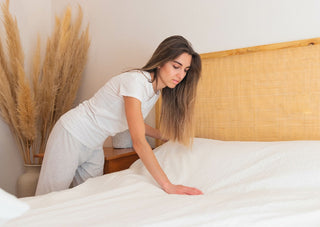Carpet Moths Natural Treatment - What Naturally Kills Carpet Moths?

Carpet Moths can be a real nuisance. Despite their small stature, the larvae of these insects can wreak havoc on rugs, carpets, tapestries, and an array of other expensive materials that contain animal-based fibres like wool, silk, and cashmere. Fortunately, many organic moth prevention methods can safely, effectively, and naturally rid your home of these nuisances.
Sometimes also known as Tapestry Moths, Carpet Moths are in the family Tineidae, a subspecies of small moths whose larvae consume detritus, fungi, and materials containing a protein called keratin which is found in animal-based fibres. Moths of this kind can be found all over the world, so if you have been noticing bare patches in your carpets, rugs, or animal hide decorations, there’s a good chance these pests are to blame.
Here, we will cover how Carpet Moths get into your home, what kind of damage they can do, and most importantly, how to naturally treat a Carpet Moth infestation. Many of these treatments feature substances that you probably already have at home! Armed with the facts, you can get back to enjoying your household and interior decor without the fear of expensive Carpet Moth damage.
Understanding Carpet Moths: Here’s What to Know!
To effectively get Carpet Moths out of your house, it's essential to understand where these pests can be found, what they eat, and precisely why they are capable of causing so much damage. Let's go over some Carpet Moth facts and general information so that you will be fully informed as you wage war on these destructive, winged invaders.
What Are Carpet Moths?
Carpet Moths are in the family Tineidae, and their scientific name is Trichophaga Tapetzella. They moths can be found all over the world, including North America, South America, Asia, and Europe, and in almost all climates. So, no matter where you live, Carpet Moths can be an issue. Even though these moths are small, often measuring less than half an inch in length, they can still cause a lot of damage in a home. So, don't let their diminutive stature fool you! If you think you have a Carpet Moth infestation, eliminating it right away with moth prevention steps is very important!
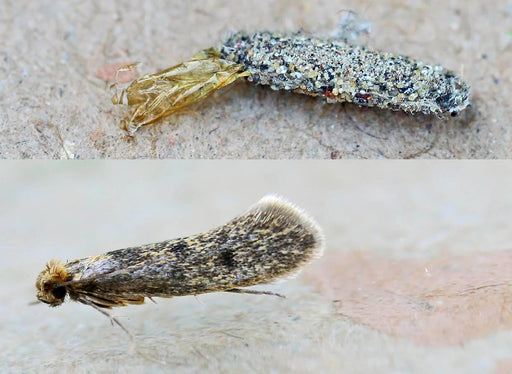
The moths have a wingspan ranging from 14 to 18 mm, light-coloured heads, brown or gray bodies, and round posteriors. The wings of the Carpet Moth are often tattered at the edges, and their larvae can be light or dark brown but are usually a creamy whitish or yellowish colour with lighter brownish heads. As adults, Carpet Moths are nocturnal, and unlike other types of moths, they are not drawn to light. Instead, they seek solitude in dark places like basements, closets, or other rarely disturbed places in a home or structure.
It's important to note that adult Carpet Moths aren't the ones that cause the damage in your home. Instead, it's their ravenous moth larvae that are responsible for rendering damage to an array of household materials as they consume any materials that contain keratin. Keratin is a protein-rich substance in animal-based fibres that gives these growing larvae everything they need to reach maturity and reproduce. Moth prevention for clothes and carpets is essential to stop these pests before they cause significant damage.
How Do Carpet Moth Life Cycles Work?
Understanding the Carpet Moth life cycle can be very helpful throughout the moth prevention and pest elimination processes. Carpet Moths find mates and suitable places to lay eggs using pheromones and other senses. For this reason, pheromone moth traps are a great way to keep Carpet Moths from laying eggs in your home.
Adult Carpet Moths are most active from June to September, but their mating and egg-laying behaviours can vary depending on where you live. After mating, the females lay eggs in a webbed casing, in relatively undisturbed areas near keratin food sources. The eggs hatch into destructive moth larvae. How long it takes for these eggs to hatch and for any resulting larvae to mature will depend on factors like local temperature, nearby food sources, and humidity.
Carpet Moth Eggs, Larvae, Pupae, and Adult Phases
The Carpet Moth life cycle has four primary phases: egg, larva, pupa, and adult. Adult female Carpet Moths will lay their eggs on suitable keratin-containing materials like fabric, carpets, feathers, wool, or tapestries. These materials serve as a safe haven for the eggs and provide a food source for the larvae once they hatch.
After hatching, the moth larvae begin a period of intensive feeding which represents the most destructive phase in their life cycle. The length of this destructive phase of the life cycle can vary depending on an array of environmental factors and conditions. Next, the pupa stage, also known as the cocoon phase, occurs.
Once the larvae have consumed enough sustenance, they will weave a protective cocoon to shield them as they metamorphosise. Upon emerging from the cocoon, the adult Carpet Moth will then seek a mate and repeat the life cycle. As such, if a large enough food source is available and an infestation goes unchecked, many generations of Carpet Moths could wreak havoc in a single area, making moth prevention a top priority for homeowners.
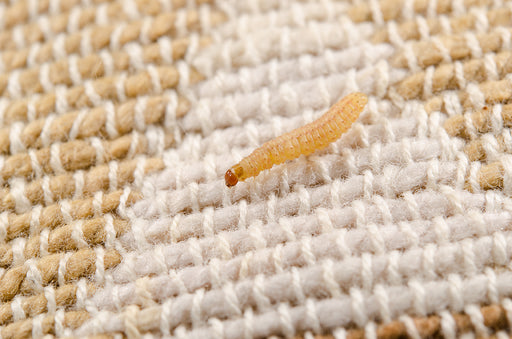
How Do Carpet Moths Get In Your House?
Carpet Moths can get into houses and buildings in many ways. The simplest explanation is that an adult egg-laying female moth flew in through an open door, window, or via another opening in a structure exposed to the open air. However, Carpet Moth Eggs can also be unwittingly carried into your home, making moth prevention a crucial step in keeping these pests at bay.
Sticky moth eggs can be attached to the undersides of furniture or hidden in a carpet roll that may have been left outdoors uncovered and then carried inside during a renovation or for some other reason. For this reason, it's very important to inspect any thrift store or secondhand items for signs of Carpet Moths, eggs or larvae before bringing them home. Moreover, if you've been keeping your belongings in a storage unit, garage, or outside for an extended period, you should also check for signs of moth activity or eggs. Using moth prevention moth traps can help catch any hidden infestations before they spread.
What Are The Signs Of Carpet Moths?
If you are attempting to identify a Carpet Moth infestation, threadbare patches on carpets and rugs can be a telltale sign. This is especially true if those rugs or carpets are in unused rooms. You may also notice signs of these moths in dark places like corners, closets, or beneath furniture that has been left undisturbed for a long time.
Bald patches on taxidermy displays, unexplained sticky webbing, the presence of dead adult moths, or empty larval cocoon casings can also be signs of a Carpet Moth infestation in the vicinity. Also, if you notice adult moths fluttering around under furniture, in dark corners, or near cracks and crevices in a rarely used room, you should check for moth larvae or eggs. Taking immediate moth prevention measures—such as using our moth traps—can help prevent further damage.
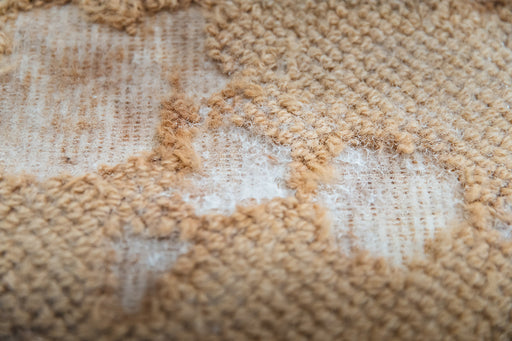
Can You Ever Get Rid Of Carpet Moths?
Yes, it is entirely possible to get rid of Carpet Moths for good. Many effective and safe natural methods are available to help you rid your household of these pests. Although these moths can be a real nuisance, eradicating them is a fairly straightforward process that involves cleaning, applying moth-killing substances, and taking preventive measures, such as using our moth prevention products. That's exactly what we will cover in the next section!
How To Get Rid Of Carpet Moths: Natural Treatment For Carpet Moths
Many natural and efficient methods can be implemented to remove a Carpet Moth infestation. Let’s go over the moth prevention steps you can take and some of the most effective natural substances that kill Carpet Moths, moth larvae, and moth eggs.
Options for Killing Moth Eggs and Larvae on Fabrics, Carpets, and Furniture
Any items that are infested should be placed in a trash bag and sprinkled with diatomaceous earth. Then, tie the trash bag shut. You can also freeze infested items for 72 hours or have them dry-cleaned to kill Carpet Moth Eggs and larvae if you don’t have diatomaceous earth to use. Items that are heavily damaged and cannot be salvaged should be placed in airtight containers or trash bags tied shut before you throw them away, to prevent the infestation from spreading.
• How To Get Rid Of Moths With White Vinegar
Wipe down furniture, drawers, cabinets, walls, and other hard surfaces with a solution of one part white vinegar to two parts water. Vinegar is a fantastic natural moth prevention option because its acidity makes it capable of killing moth eggs and removing lingering pheromones that attract new moths. You can also safely spray a vinegar and water solution on most fabrics, although you might want to do a spot test first to make sure that any fabric dyes will not be affected.
How Does Vinegar Kill Carpet Moths?
White vinegar kills Carpet Moths through an acidic cleansing process. It changes the pH levels of any surface that it touches, and moth eggs or larvae that are exposed to white vinegar will not be able to survive in this acidic environment. You can apply white vinegar using a sponge, or rag, or by spraying it on a surface using a spray bottle.
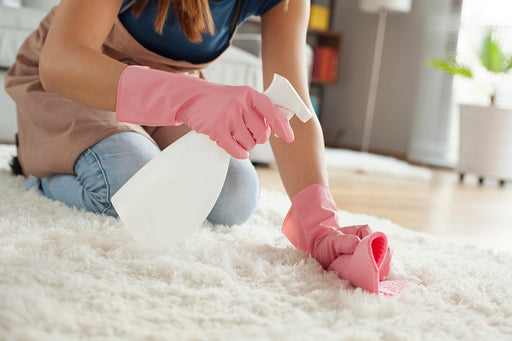
• Sprinkling Diatomaceous Earth for Carpet Moths
Sprinkling diatomaceous earth everywhere is a great organic way to kill all kinds of insects including ants, bedbugs, and moths. Diatomaceous earth is safe to use around kids, pets, and people, but the powdery substance is toxic to insects because it sticks to the waxing coating of their exoskeleton. Do keep in mind that diatomaceous earth can take some time to effectively kill insects, so leave it to sit for at least 24 hours before vacuuming it up.
How Does Diatomaceous Earth Kill Carpet Moths?
As moths and moth larvae move around, they come in contact with the diatoms, which stick to them, preventing aspiration and leading to suffocation.
• Vacuuming and Steam Cleaning To Kill Carpet Moths
Vacuum the entire room including any cracks, corners, and crevices to suck up any dead moths, larvae, eggs, or lingering live insects. After vacuuming, as a final moth-killing step, steam clean carpets and furniture for an extra layer of moth prevention.
How does steam cleaning kill Carpet Moths?
Generally, insect larvae, eggs, and adults will die quickly when exposed to temperatures of 122° F (50° C) or above. Since steam forms at 212° Fahrenheit (or 100° Celsius), the temperature of your steam cleaner should already be well over the killing point. This makes steam cleaning a safe, natural, and effective way to kill Carpet Moths.
Four Steps for Eliminating Carpet Moths
Step 1: Identifying And Isolating A Carpet Moth Infestation
First things first, you have to figure out where the infestation is coming from. If you've noticed signs of Carpet Moths like threadbare patches and carpets, holes in tapestries, bare patches on furniture, or damage to taxidermy displays, you probably have some sort of a textile moth infestation. Start searching all nearby areas for dead adult moths, dead larvae, live larvae, casings, webbing, eggs, etc.
You may have to move furniture out of the way or peel up the edges of the carpet to figure out where an infestation is heaviest. Until you figure out where an infestation is primarily located, try to keep all potentially infested items grouped. That way, the infestation does not spread to other parts of your home.
Step 2: Preparation and Supplies
Now it's time to prepare to wage war on these invaders. You are going to need a few supplies, although many of these items you may already have on hand. Here’s a list of Carpet Moth-killing supplies you should consider getting:
Carpet Moth Killing Supplies
- Large trash bags
- Natural moth-killing solution (vinegar, Diatomaceous earth, or a steam cleaner can all be safe, natural options.)
- Buckets and rags
- Soap and water
- Vacuum cleaner
- Spray bottle
- Natural pheromone Moth Traps

Step 3: Cleaning and Killing Adults, Eggs, and Larva
You can begin removing a Carpet Moth infestation by getting any furniture or items out of the way and attacking these invaders at their primary source. Usually, a Carpet Moth infestation will be heaviest in a specific area of the carpet or on a main item that has the protein keratin in its makeup. Vacuuming and cleaning with moth-killing substances should be your first steps toward tackling the issue.
You may notice any number of living larvae crawling around and eating a nearby food source. However, if you can't identify a specific target zone where moth activity is heaviest, you can still clean and treat the entire room as well as any damaged or infested items.
Step 4: Take Preventative Measures
Once you've killed adult moths, eggs, and larvae, and cleaned the entire area, it's time to start taking preventative measures to dissuade an infestation from ever reoccurring. One of the best ways to do this is to implement pheromone Moth Traps. MothPrevention pheromone Moth Traps are natural, effective, and safe, for preventing future Carpet Moth infestations. The moth traps have sticky strips and lure in the active adult male Carpet Moths using natural female pheromones. This helps reduce the male population and help break the breeding cycle.
FAQs About Naturally Getting Rid of Carpet Moths
Now that we've gone over the basics and discussed what naturally kills Carpet Moths, let's cover some frequently asked questions on the subject.
What naturally kills Carpet Moths?
You don't need pesticides or harsh chemicals to rid your home of a Carpet Moth infestation. Indeed, many substances can be used to naturally kill moths including white vinegar, Diatomaceous earth, and extreme temperatures, as with the use of a freezer or a steam cleaner.
Does white vinegar kill Carpet Moth Larvae?
Yes, the pH levels of white vinegar and its acidity create a toxic environment. When Carpet Moth Larvae and eggs come in contact with enough vinegar, they will perish.
What Do Carpet Moths Eat?
Do Carpet Moths eat clothes? Or do they only consume your carpets and tapestries? The truth is that the larvae of the Carpet Moth can feed on an array of animal-based fibres that contain keratin, including fur, clothing, animal skins and wool or silk found in carpets, rugs, and tapestries.
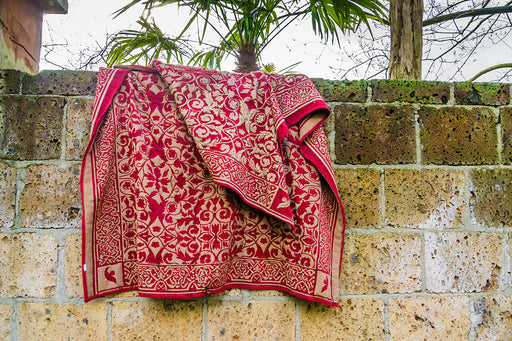
Does vinegar kill Carpet Moth Eggs?
Yes, white vinegar can be used to effectively kill Carpet Moth Eggs before they hatch. However, an adequate amount of white vinegar is needed on surfaces for this approach to be effective and this may not be possible on certain fabrics and textiles. So, you may want to also implement other methods, such as freezing items for 72 hours, placing pheromone Moth Traps, steam cleaning, or sprinkling diatomaceous earth on carpets to ensure your DIY pest control efforts are thoroughly effective.
Does Baking Soda Kill Carpet Moth Larvae?
When combined with vinegar, baking soda can kill Carpet Moth Larvae and eggs. However, baking soda on its own, is not the most effective method to eliminate Carpet Moths from your home.
How Do You Use Baking Soda And Vinegar For Carpet Moths?
Carpet Moth treatment with baking soda and vinegar involves sprinkling carpets with baking soda, leaving for 24 hours, and then using equal parts water and white vinegar in a carpet shampooer or spray bottle to create a foaming reaction that is not only capable of lifting away dirt but creates an acidic environment and changes the pH of surfaces to kill moth larvae and eggs. Then wash the carpet or rug with water.
Can Salt Get Rid Of Carpet Moths?
While regular table salt cannot generally be used to kill insects like Carpet Moths, certain types of ultra-fine salt may have insect-killing effects. Strong salt solutions can be used to kill fleas, lice, and even bed bugs. So, they may have effects on Carpet Moth Larvae. However, for better results, implement the use of a steam cleaner or sprinkle Diatomaceous earth on carpets. Allow diatomaceous earth powder to sit for at least 24 hours, then vacuum it away.
What Is The Fastest Way To Get Rid Of Carpet Moths?
Carpet Moths can be seriously destructive pests. The larvae of these Tineid moths often cause significant deterioration to household fabrics like carpets and clothes. The fastest way to get rid of Carpet Moths involves thoroughly cleaning an area, treating it with a moth-killing spray solution or steam cleaning, and then vacuuming up any dead larvae and eggs. Then, use Moth Traps to keep any future issues at bay.
What can I put on my carpet to kill moths?
You can sprinkle diatomaceous earth on the carpet and then let it sit for at least 24 hours to kill Carpet Moths. You can also steam clean your carpets to kill Carpet Moths. Or, implement both methods for extra peace of mind.
How are Carpet Moths Different From Clothes Moths?
Carpet Moths and Clothes Moths are both unique Textile Moth species. One would think that Carpet Moths infest carpets while Clothes Moths infest clothes, but this is not always the case. These terms are often used interchangeably, which can lead to confusion, but the moths are separate subspecies.
Are Carpet Moths Dangerous?
Although Carpet Moths cannot bite or sting, Carpet Moth Larvae can be incredibly destructive to furniture, fabrics, taxidermy items, tapestries, home decorations, and more. Since their larvae eat organic materials and keratin proteins, they can wreak all sorts of havoc in your home if left unchecked. So, while adult Carpet Moths are not technically harmful to humans or pets and don’t possess mouthparts, their larvae can cause seriously expensive destruction in your home if left unaddressed.
About MothPrevention
MothPrevention® speak to customers every day about their clothes moth issues - clothes moths are a species that are ever increasing and that can cause significant damage to clothes, carpets and other home textiles.
To date, we’ve helped over 250,000 customers deal with their moth problems. We have developed professional grade solutions including proprietary pheromones and trap design engineered to the highest production standards.




